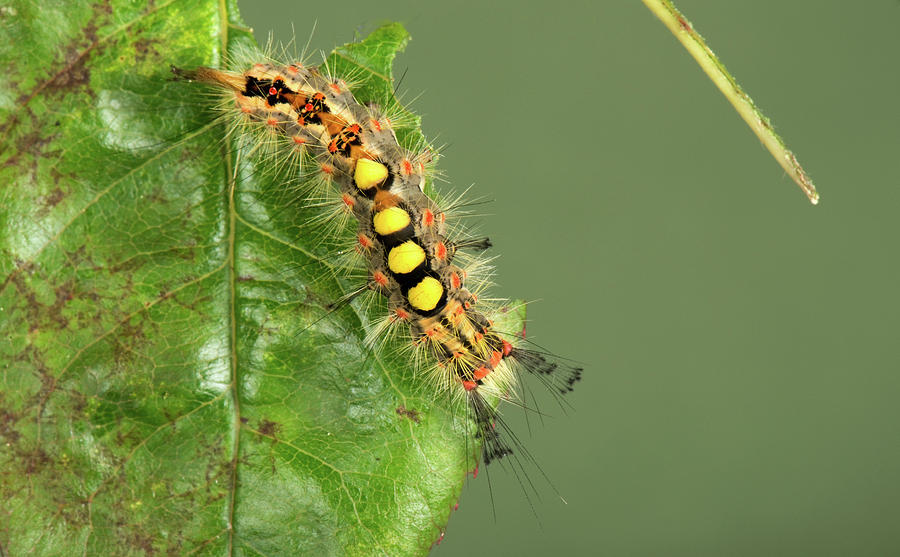
Vapourer moth caterpillar 3 Vapourer moth caterpillar. Fo… Flickr
Tussock Moth caterpillars (from the family Lymantriidae) are voracious eaters capable of defoliating entire forests. The best-known member of this family is the beautiful but highly detrimental Gypsy Moth which is not native to North America. After its introduction, the potential for destruction these critters could wreak became all too clear.

The Poor Mouth Vapourer Moth caterpillar
Vapourer Orgyia antiqua The male of this species has broad orange-brown wings with a pair of white eye spots. The antennae are strongly feathered. The nearly wingless female has a plump grey-brown body. Males fly in the sunshine, usually quite high, and are rarely seen at rest.

Vapourer Moth caterpillar Native plants, Plant leaves, Moth caterpillar
The Vapourer moth is a common species with a fascinating life cycle. It's found in a wide range of habitats including open woodlands, moorland, valleys and urban gardens throughout most of the British Isles ranging from northern Scotland to the extreme south west of Cornwall.

Vapourer Moth Caterpillar Photograph by Nigel Cattlin
Orgyia antiqua, the rusty tussock moth or vapourer, [2] is a moth in the family Erebidae . Distribution and status O. antiqua is native to Europe, but now has a transcontinental distribution in the Palaearctic and the Nearctic regions. [3] The species is not on the IUCN (2007) Red List; [4] and in the UK is considered a common resident. [5]

Vapourer Moth caterpillar Baby Routes
Vapourer Scientific name: Orgyia antiqua The mohawk-sporting caterpillar of this moth is often seen on shrubs and trees in late summer. As adults the orange-brown males fly by day, but the flightless females don't stray far from their cocoon. Species information Category Moths Statistics Male wingspan: 12-17 mm Conservation status Common

Common Vapourer Moth Caterpillar antiqua} Alex Hyde
The males of the vapourer moth are fully winged and are orange-brown with a white spot on each fore wing 1 / 3 Biology of the Vapourer Moth Caterpillars emerge from May onwards and feed until August-September. Female caterpillars feed some 10 days longer than males.

Vapourer Caterpillar, Corfe Mullen Dorset Butterflies
The Vapourer is a moth with a fascinating life-cycle as shown in the images at the top of the Caterpillar Life-cycle page. The males have comb like antennae which they use to detect the pheromones given off by recently emerged flightless females.

Vapourer Butterfly Conservation
Common name Vapourer moth Scientific name Orgyia antiqua Plants affected Birch ( Betula ), hazel ( Corylus ), lime ( Tilia) and many other broadleaved trees and shrubs including Cotoneaster and Pyracantha Main symptoms Hairy caterpillars, grey-black with yellow tufts and red spots (30-40mm long) Most active Spring to summer Jump to